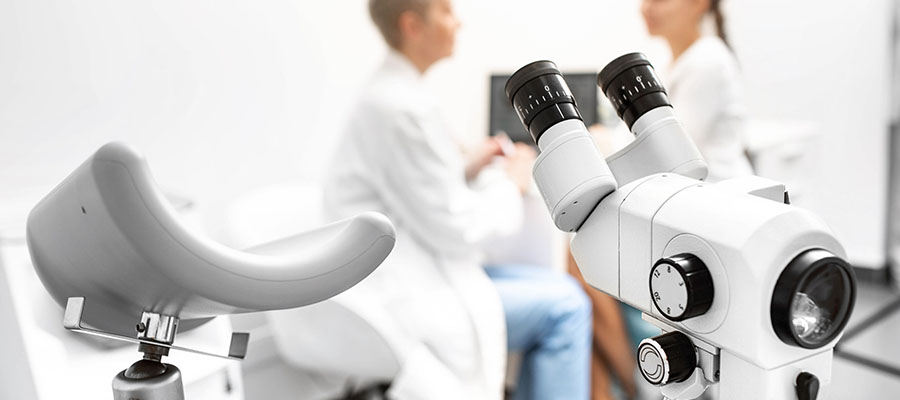

Colposcopy
We prioritise women's health by providing advanced diagnostic procedures such as colposcopy. This procedure is vital for detecting and addressing potential issues early, ensuring the best possible outcomes for our patients.
What is a colposcopy?
A colposcopy is a diagnostic examination aimed at closely inspecting the cervix, vagina, and vulva for indications of disease. This procedure utilises a colposcope, a specialised device featuring a light and a magnifying lens, to offer a clear and enlarged view of the tissues. It is usually advised when abnormalities are detected during a routine pelvic exam or Pap smear.
What happens during the procedure?
During a colposcopy, you will lie on an examination table, similar to a pap smear. The healthcare professional will insert a to allow for a clear view of the cervix. A mild acetic acid solution (vinegar) is applied to the cervix, which may cause a slight tingling sensation.
This solution helps highlight any abnormal areas by turning them white. We examine the cervix through the colposcope and may take a biopsy (a small sample of tissue) from any areas that appear unusual. The entire procedure usually takes about 10-20 minutes.
Why would someone need a colposcopy?
A colposcopy is typically recommended if you have had abnormal results from a pap smear or if there are visible abnormalities during a pelvic exam. Some common reasons for a colposcopy:
- Abnormal cervical cells detected in a pap smear
- Persistent HPV (Human Papillomavirus) infection
- Unexplained bleeding or discharge
- Suspicious lesions or growths on the cervix, vagina, or vulva
This procedure helps in the early detection of cervical cancer, precancerous changes, and other conditions, enabling a timely and appropriate treatment.
What would the results of the colposcopy mean?
The results of a colposcopy can vary depending on the findings. If no abnormal areas are detected, you may not need any further treatment, and your healthcare provider will discuss a plan for regular follow-up screenings.
If abnormal areas are found and a biopsy is taken, the tissue sample will be sent to a laboratory for analysis. The results may indicate:
- Normal tissue: No further action is required beyond routine screening.
- Benign changes: These are non-cancerous and may not require treatment, but follow-up monitoring may be recommended.
- Precancerous changes: These changes, known as dysplasia or CIN (Cervical Intraepithelial Neoplasia), may require further treatment to prevent progression to cancer.
- Cancerous changes: If cancer is detected, your healthcare provider will discuss the next steps, including additional tests and treatment options.
We understand that undergoing medical procedures can be daunting, and we strive to offer a compassionate and supportive environment for all our patients.
Reach out to us today to schedule your colposcopy and take the first step towards maintaining your cervical health.
